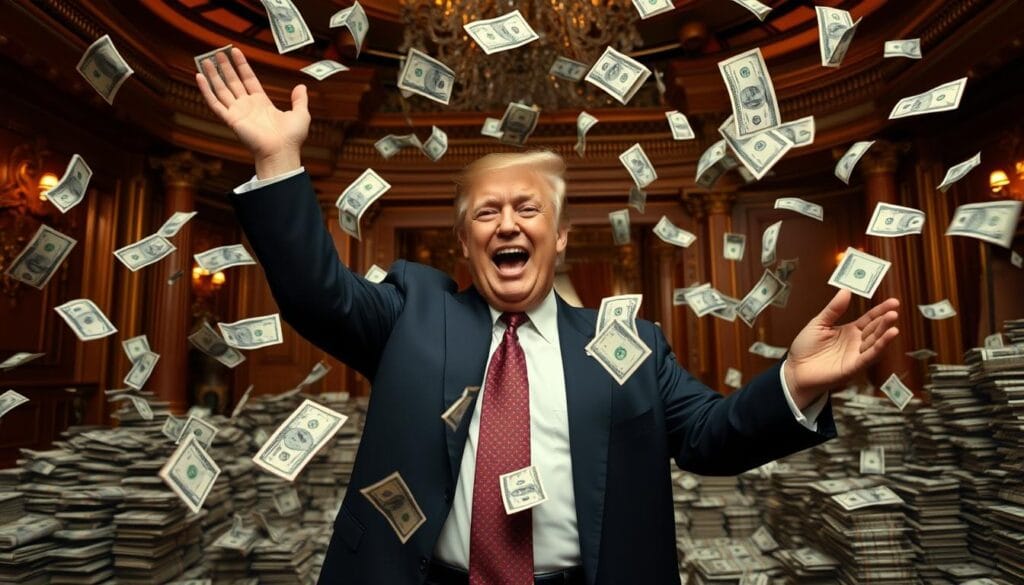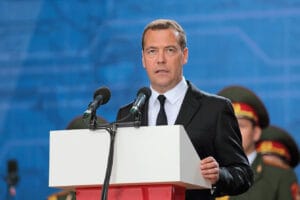Trump Wins Court Case For Billions in Blocked Foreign Aid
Trump Wins Court Case, Billions in Blocked Foreign Aid: Supreme Court sides with Trump, freezing $5 billion in foreign aid.

Trump Wins Court Case For Billions in Blocked Foreign Aid
Click to summarize this article.
Trump Wins Court Case For Billions in Blocked Foreign Aid: Washington feels heavy today as the Supreme Court extends an order that keeps nearly $5 billion frozen. I ask myself: What happens when funds meant for clinics and schools are stopped midstream?
I watch a judicial majority move quickly on an emergency appeal, while three liberal justices dissent. The trump administration frames this as a legal victory, and the president asserts control over how money flows. But the human ledger is longer than a headline.
The case is not only a legal issue; it is also causing delayed vaccines, paused classrooms, and plans to be put on hold. I want to understand how an order from the high bench turns budget lines into waiting rooms. Read more perspectives and updates here.
Trump Wins Court Case For Billions: Key Takeaways
- The Supreme Court extended an order that keeps nearly $5 billion frozen.
- The decision reflects a conservative majority and a three-justice dissent.
- Federal action by the trump administration halts funds and delays projects.
- Emergency appeals can speed legal timelines with real-world consequences.
- This pause turns promises of foreign aid into waiting lists for services.
Supreme Court Extends Freeze on Nearly $5 Billion in Foreign Aid
The Friday extension kept an emergency order alive and allowed the administration to hold nearly $5 billion in pause. I watch that pause as if a traffic light turned red for dozens of projects abroad. See on NBC News
What the emergency order means right now
The order means the freeze holds. Agencies must stop disbursements and tell partners to wait. That creates immediate uncertainty for programs and contractors.
An emergency is not just a label; it shortens deadlines and raises the stakes for planners and aid workers.
Scope of the funds affected by the freeze
The billion foreign aid figure captures scale but hides details: health supplies, education grants, and training budgets all face delays.
| Category | Approx. Impact | Short-term Action |
|---|---|---|
| Health shipments | Delayed deliveries | Reschedule carriers |
| Program grants | Suspended contracts | Notify grantees |
| Training & services | Postponed events | Renegotiate timelines |
“Holding funds buys legal time but costs operational time,” a program director told me.
How the Conservative Majority Reached Its Decision
Midnight filings arrive like a short, sharp knock: urgent, compressed, and asking the court to act without delay. I felt that push and wondered—should speed trump thorough airing when lives and budgets are at stake? See more on this Newsweek article
The emergency appeal and the shadow docket context
The conservative majority granted an emergency appeal after a late request to pause disbursements. That move maintained the status quo while a more comprehensive review is pending. It was a process decision as much as it was about the outcome.
The three liberal justices in dissent
The three liberal justices dissented, reminding us that another reading of the law still exists. Their view calls for a fuller argument and greater transparency.
“Urgency offers leverage, but it can also hide reasoning,” I kept thinking.
- I picture compressed arguments and urgent timelines.
- The majority opted for continuity, avoiding sudden change.
- The shadow docket made the move swift and consequential.
- For President Donald Trump, the procedural win buys time and policy space.
For readers who want the procedural angle tied to recent bench actions, see this Supreme Court action.

Trump Wins Court Case, Billions in Blocked Foreign Aid
I feel the tug between law and lives. A narrow majority on the bench gave the administration a short-term victory, shifting control of spending.
The ruling is not just ink. It tilts authority toward the White House and revives a disputed power that had primarily lain unused for decades.
Donald Trump and President Donald’s line of argument refused to release congressionally approved money last month, invoking an old prerogative. Supporters call it restraint; critics call it a break with partners who count on that funding.
“Authority, once claimed, shapes what comes next,” I kept thinking.
The human cost is immediate: programs wait while policy sorts itself out. Who loses time? Who waits for supplies and salaries?
- The court’s endorsement signals a willingness to let the executive hold purse strings for now.
- Money that was meant as aid now stands as a test of control and precedent.
- What appears to be a legal victory raises urgent questions about trust and delivery.
For continued coverage and context, see a closer report on developments tying policy and diplomacy.
Presidential Power at Issue: Disputed Authority Revived After 50 Years
This moment feels like a reopened chapter from half a century ago, when presidents tested the edges of spending authority.
I watch history echo through the halls and ask: What does it mean when a claim of executive power resurfaces after decades?
Historical use of impoundment and modern constraints
Fifty years ago, fights over impoundment led to the introduction of new rules. That year of reform aimed to limit how funds could be held back.
Law sets the guardrails, but daily practice shows the gaps. I think about how a pause in spending can reshape plans on the ground.
- I see budget frameworks made to bind promises to calendars.
- I see presidents probe those boundaries when the stakes feel urgent.
- I see courts step in to referee when discretion becomes a matter of direction.
“When does prudence become overreach?” That question sits heavy with me.
The administration now faces a choice: defend a narrow pause or answer why delay replaces delivery. For background on the bench’s posture, see justices lean toward immunity.
Friday Ruling and the Role of the Supreme Court
The court’s supreme court Friday move held the purse strings for now, and the moment felt heavy with consequence. I watched how a single order can pause plans and reshape days.
On Friday, the conservative majority extended the order, granting the administration an emergency appeal while three liberal justices dissented. That split matters not just legally but practically.
When Justice John Roberts presides, signals travel beyond words. The role of the Chief Justice John often feels architectural—putting votes and timelines into a single motion.
- Friday’s ruling sits like a hinge: the door to spending remains closed, and the handle rests with the bench.
- With John Roberts temporarily preserving the status quo, agencies must recalibrate and wait.
- The court’s Friday decision shows how emergency steps trade speed for caution.
“Temporary relief can still redraw lasting lines,” I kept thinking.
The moment is provisional but consequential. For context on how some justices lean in similar fights, see this analysis of justices’ positions.
Chief Justice John Roberts and the Court’s Alignment
I watch the chief justice steer the immediate tempo, deciding which storms the bench will weather now and which it will postpone.
How does leadership change an emergency ruling? In tight moments, the chief justice sets the pace and frames what looks urgent versus what can wait.
That instinct for stability often nudges toward short, measured holds. Justice John Roberts prefers continuity when the bench faces sudden requests.
How the chief justice shapes emergency relief
The conservative majority moved to preserve the status quo, and that choice reverberates beyond the law. The decision signals a cautious path that gives the administration breathing room while full review unfolds.
“Leadership in these hours is choreography as much as doctrine,” I kept thinking.
- The chief balances consensus and public optics.
- Dissent shows the record is not settled.
- Sometimes, John Roberts temporarily holds a line that a later opinion may redraw.
Congressional Control of Spending vs. Executive Discretion
I keep thinking about who truly controls the money when a signed budget is subject to executive discretion.
Congress approved the funds, but the administration chose to pause their implementation. What happens when a roadmap gets pulled to the shoulder?
Separation of powers and the power of the purse
The Constitution gives lawmakers control of the purse, but practice allows for presidential discretion.
That friction makes power feel lived, not theoretical. When the white house holds back payments, communities wait.
Implications for future budget standoffs
The court‘s temporary endorsement heightens an old debate over the separation of powers.
Statutes provide referee rules, yet gray areas remain where law and politics intersect.
- Lawmakers expect appropriations to become deliverable funds.
- Administrations may use pauses as leverage during negotiations.
- The Supreme Court’s short-term choices can widen or narrow those gaps.
“Power of the purse is not just a slogan; it becomes leverage when deadlines loom,” I kept thinking.
When I imagine aid programs delayed, I picture towns that never asked for our legal fights but feel them anyway. Future standoffs may follow a simple playbook: pause, litigate, wait—then bargain with time as the currency.

What the White House and Justice Department Argued
I listened as the white house framed the pause as a moment to catch its breath and reassess priorities.
The request sought emergency relief so officials could review strategy, check accountability, and reorder plans before spending resumed. The message was simple: time to think, not to cancel.
The Justice Department cast the move as protection of executive prerogative. Better to pause now than to face regret later, they argued. The conservative majority accepted that framing over the liberals’ dissent.
“Interim restraint can be stewardship, or it can be delay that feels like denial.”
- The white house urged flexibility to realign funds and priorities.
- The justice department emphasized precedent and prudence.
- The administration stated that restraint is temporary; commitments remain in place.
| Actor | Core Claim | Immediate Effect |
|---|---|---|
| White House | Need time to reassess | Delayed disbursements |
| Justice Department | Protect executive authority | Legal shield for pause |
| Conservative Majority | Accept emergency framing | Status quo preserved |
I keep thinking: when does stewardship become stonewalling? The administration claims this is care; others view it as lost weeks for people waiting on the ground.
Impact on Foreign Aid Programs and U.S. Partners
I see supply pallets idling at docks while schedules that once hummed go quiet.
Short-term delays ripple fast. I watch trainers postpone sessions, clinics push back opening days, and consultants stay on hold. These are small acts of interruption that seem tiny on paper but heavy in practice.
Short-term delays to on-the-ground programs
When shipments sit, deliveries slip, and morale frays. Implementing teams scramble to keep staff and contract terms intact.
Signals sent to allies and implementing agencies.
Allies read pauses as cues. A pause that the White House calls prudent can appear as uncertainty to partners. Trust and planning suffer when timelines blur.
Budget-year timing and reallocation risks
The calendar matters. Disbursements pushed too close to the end of the fiscal year increase the risk of reallocation. Money missed now may not be recoverable later.
“Predictability moves people; both are now in short supply,” I kept thinking.
| Area | Immediate Effect | Risk by Year-End |
|---|---|---|
| Health programs | Shipments delayed | Lost vaccination windows |
| Education & training | Sessions postponed | Curricula gaps, repeat costs |
| Local partners | Cash-flow strain | Contract defaults, staff turnover |
On balance, the nearly five billion dollars in foreign aid freeze turns strategic efforts into contingency work. The administration may argue the pause on guard funds, but communities feel it as a delay. I wonder: can planning survive repeated stops and starts?
Lawmakers Respond: Support, Pushback, and Next Steps
I heard colleagues trade sharp questions and softer cautions as the decision landed in daylight.
On the Hill, reactions split along familiar fault lines. Some lawmakers praised the ruling as a necessary check on haste.
Others called it a backdoor veto of Congress’s will. I wondered: when does a temporary pause become permanent power?
- Last month, President Donald Trump stated that he would not spend the funds, and that statement now influences how members discuss the issue.
- The white house frames this as responsible governance; critics call it power over policy.
- The trump administration’s win energizes allies who want tighter control over commitments.
- Donors and diaspora groups press their representatives to protect program continuity.
In hearings and hallways, I imagine members asking: Where does the money sit? What conditions attach? And how long will “temporary” last?
“Timing and trust will decide whether programs recover or fade,” I kept thinking.
Next steps split two ways: legislative fixes for some, more litigation for others. Both lead back to a simple question—who gets the final word on funds and timing?
Reading the Order: What the Court Did—and Didn’t—Decide
For now, the bench chose to buy time, not to decide the ultimate legal fate. The extended order preserved the freeze and handed the administration a brief reprieve.
That relief is temporary. It is not a final decision on the merits of the case. Three liberal justices dissented, signaling the dispute is far from settled.
Temporary relief vs. final ruling
The stay functions like a bookmark: it holds the page but does not write the ending. The Justice Department won a delay, and a delay can reshape facts and strategy.
What to watch in the complete merits phase
- This order preserves the freeze without fixing who controls the money.
- Later questions will test how probabilities of harm weigh against settled law.
- Watch which factual gaps the justices demand, and which legal frames the Supreme Court adopts.
- The year’s clock keeps ticking; procedural wins buy leverage as much as they buy seconds.
“A stay is not a stamp of approval—it is a pause in service of judgment.”
I keep watching the signals and questions that will come at the argument. For ongoing coverage and updates, please refer to these legal updates.
Timeline: From Announcement to the Supreme Court’s Friday Action
Last month’s announcement set the clock ticking and shaped every filing that followed.
The president said last month he would not spend the money. That line became the pivot for a fast-moving legal story.
The month the president announced a pause.
From that moment, time compressed. Briefs stacked up. An emergency request raced toward the high bench.
Lower-court developments and the emergency request
In the district level, a U.S. district judge weighed harms as lawyers pushed deadlines. The district judge looked at urgency and effect.
I pictured packed calendars where Judge Amir heard arguments and partners read signals between orders. Names stuck on filings: Amir Ali, Judge Amir Ali, a reminder that people shape institutions.
- Last month set the sequence.
- A single fast request carried the dispute upward.
- When Amir Ali ruled on interim steps, the path to the high bench cleared.
“The court’s Friday extension reframed what came before; steps became precedent,”
Key Legal Voices and District Court Context
Behind terse orders lie affidavits that map real lives and ticking calendars. I felt that when early filings came before the bench and when judges asked the quiet, sharp questions that mattered.
Key voices matter. In those first hearings, a U.S. district judge had to weigh haste against fairness. The role of a district judge is to manage urgency without losing sight of people.
Role of the U.S. District Judge in earlier proceedings
Judge Amir Ali moved through affidavits, witness statements, and scheduling demands. Each brief carried logistics: payrolls, shipping dates, and classroom plans.
When Amir Ali ruled on interim measures, the path for later appeals changed. The district judge framed harms and timelines that the higher bench could not ignore.
Perspectives from legal advocates, including Amir Ali
Legal advocates warned that shortcuts in emergency procedures can become routine. I heard lawyers stress that law protects people by forcing clear record-making, not by rushing past it.
“Process protects the lives behind the filings,” I kept thinking.
- In district court, law meets logistics under a judge’s steady eye.
- Judge Amir Ali appears as more than a name: he shaped how urgency was judged.
- The court at every level reminds us that procedure matters for real outcomes.
Policy Stakes: Aid Priorities, Administration Strategy, and Year-End Deadlines
With weeks left before the year closes, program teams are redrawing maps and reprioritizing tasks. I watch planners decide which projects race forward and which quietly wait.
The budget calendar is not neutral. Year by year, it tells a story of values, and this year the freeze edits key chapters just before the end.
The administration now steers which funds move and which pause. That strategy resembles triage: some dollars are rerouted, some sit idle, and some risk expiring unspent.
I imagine program managers sketching contingency maps. Which aid objectives can tolerate delay? Which need immediate cash to keep clinics and classes open?
“Each million matters differently — what reads as a headline can translate into lost vaccinations or stalled classrooms.”
- Local partners face bridging costs or scaling back services.
- Short timelines make reallocation more challenging and trust even thinner.
- The trump administration must weigh defending the pause against mounting practical harm.
Those billion-dollar foreign aid headlines may seem huge, but the work is granular. As the year winds down, deadlines harden and flexibility fades. Strategy cuts both ways: it buys leverage now and could cost partnerships later!
What Comes Next in the Case and the Money’s Fate
The immediate scramble gives way to a steadier rhythm: briefing, argument, and the slow work of choice.
Next, expect a briefing schedule. The emergency posture will give way to a full merits phase, where details are brought into daylight. I watch calendars fill with deadlines and lawyers frame the record for a longer argument.
Potential for a merits hearing and briefing schedule
The court will set dates and ask for focused briefs. That schedule matters: it determines how quickly the question of control and the larger legal decision gets addressed.
Options available to the administration and lawmakers
The administration has several options: partial releases, revised guidance, or negotiated timelines with partners abroad. Those moves can ease pressure without resolving the core dispute.
- Lawmakers can add conditions, demand reports, or legislate clearer guardrails.
- The order remains pivotal; until it changes, funds sit and programs orbit uncertainty.
- Miss the fiscal year window and authorized money risks lapsing.
“Contingency plans help, but clarity is what partners really need,” I kept thinking.
For context on budget choices and possible legislative responses, see a note on proposed cuts at federal budget adjustments.
Trump Wins Court Case For Billions in Blocked Foreign Aid Conclusion
Ultimately, I find myself weighing a short legal move against long human waits. ,
The Supreme Court extended the order, and the ruling feels temporary, yet its effects are already real.
I note that President Donald Trump and the trump administration now hold timing as a form of power. That revival of executive authority echoes old debates about who controls spending.
Foreign aid stands still while decisions move. Is spending a promise or a preference? The answer will shape the end of many projects and the tone of future efforts.
The law will speak more fully later, but people waiting cannot pause their lives for perfect words.
Trump Wins Court Case For Billions in Blocked Foreign Aid FAQ
What exactly did the Supreme Court do on Friday?
I watched the emergency order and felt the weight of it. The justices temporarily extended a freeze on nearly 5 billion that the administration had held back. This pause prevents the funds from being transferred while lower-court rulings and further appeals are being processed.
What does the emergency order mean right now?
It means the money stays on hold. Agencies cannot shift or spend the affected sums while the court’s temporary relief remains in place. I keep asking: who decides the tempo of aid when lives depend on timing?
Which funds are covered by the freeze?
The order affects several programs funded in last year’s spending measures — the packet includes defense-related grants and security assistance abroad. In short, the most immediate programs tied to that nearly billion are paused.
How did the conservative majority explain their decision?
The majority framed this as a question of immediate legal harm and the need to preserve the status quo pending review. I felt the tension: a narrow procedural move with broad policy echoes.
Why was the emergency appeal heard on the shadow docket?
The government sought fast relief, so they used the shadow docket — a route the court uses for urgent orders without full briefing or oral argument. I wonder: does speed help justice or obscure it?
What did the three liberal justices say in dissent?
They warned that the order lets the executive override Congress’s power to control spending. Their dissent argued that emergency relief was unwarranted and stressed the need to protect legislative authority.
How does this decision relate to presidential spending power historically?
This revives a debate about impoundment — the idea that a president can withhold funds that Congress has approved. I reflect on history: for decades, limits have tightened, but the current action opens questions about executive reach.
What role did Chief Justice John Roberts play in this alignment?
Roberts sided with the conservative bloc on this emergency order. His vote helped form the majority that granted temporary relief, shaping how the court manages urgent executive requests.
How does this affect the balance between Congress and the White House?
The order highlights a tug-of-war over the “power of the purse.” If the executive can pause spending without clear congressional assent, lawmakers’ control over budgets could weaken. I keep asking: Will we see more budget standoffs?
What did the White House and Justice Department argue?
They argued that withholding the funds fell within executive discretion and was necessary for national security considerations. Their filings sought rapid judicial relief to keep the pause intact while challenges proceed.
How will U.S. partners and on-the-ground programs feel the impact?
Expect short-term delays for programs that rely on the frozen funds. Partners may face uncertainty, and agencies could scramble to manage timing. These interruptions can ripple into planning and operations abroad.
What signals does this send to allies and implementing agencies?
It sends a message of unpredictability. Allies may hesitate, and agencies must brace for shifting priorities. I worry about trust — once shaken, it’s slow to rebuild.
What did lawmakers say in response?
Reactions split along familiar lines. Some supported the pause as a check on administration judgment; others decried it as executive overreach that undermines congressional spending authority.
What did the court actually decide, and what remains undecided?
The court granted temporary relief — not a final ruling on the merits. The big legal questions about authority and appropriations still await fuller briefing and possible arguments at the merits stage.
What should we watch next in the case?
Watch for the merits schedule: whether the court sets briefing deadlines, agrees to hear full argument, or lets lower courts resolve the dispute. Each step will shape the funds’ ultimate fate.
What’s the timeline that led here?
The pause began when the administration declined to spend the approved money earlier this year. Lower courts then issued rulings, an emergency appeal followed, and the Supreme Court acted on Friday to extend the freeze.
What role did the district court and Judge Amir Ali play earlier?
A U.S. district judge, whose rulings are part of the record, weighed initial challenges to the withholding. Legal advocates, including those who filed mentions of Amir Ali’s decisions, helped frame the appeals that reached the high court.
What are the policy stakes beyond the immediate funds?
The stakes touch aid priorities, administration strategy, and end-of-year budget timing. Decisions now could shape how future appropriations are allocated and how quickly agencies respond to global needs.
What are the next legal options for the administration and Congress?
The administration can press for a full review at the Supreme Court or return to lower courts; Congress can use legislation or oversight to push back. Each path carries political and legal consequences.
Could the court’s temporary order become permanent?
It could, but only after full consideration of the merits. For now, the order preserves the status quo, while the longer legal battle will determine whether the pause becomes binding law.






